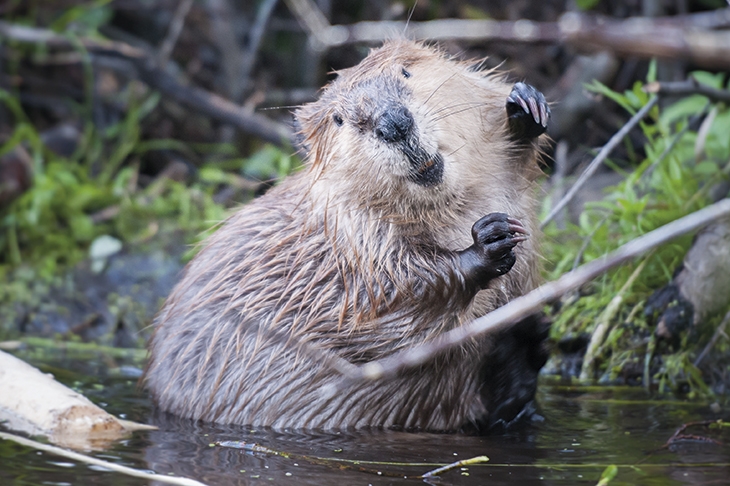There is a particularly magical West Country woodland that I know, through which a sunlit stream meanders, braided by a series of neatly dammed pools that hum with life; dragonflies and mayflies, swallows, swifts, kingfishers, amphibians and small fish teem here in numbers rarely seen in Britain. The birdsong is cacophonous. The water’s edge is lined with the fresh growth of willow, hazel and alder, artfully coppiced as if by a skilful gardener. This wood happens to be home to a family of reintroduced beavers.
Beavers were eradicated from Britain centuries ago, hunted for their fur and for the valuable castoreum oil which is found in sacs under their tails. They are highly territorial animals, living in small family groups comprising a single pair and their ‘kits’, along with an assortment of adolescent offspring who tend to hang around until their second or third year. They use water as a means of escape, so while their food (the bark, twigs and shoots of trees, shrubs and other plants) is to be found on land, beavers never travel far from water. Life is therefore straightforward for beavers with prized territories along broad stretches of water. But when these areas are occupied, young beavers looking to establish a territory of their own must make their way up into streams and tributaries. It is here that they really make an impact. For without adequate deep water, beavers set about creating it themselves, using stones, branches and mud to construct small dams, behind each of which they dig out a large pool that fills with water. Before long the stream resembles the flooded steps of an immaculately terraced rice paddy. These wetlands soon abound with life.
Streams engineered in this way by beavers play a critical role in protecting us from flooding, as well as from seasonal drought.








Comments
Join the debate for just £1 a month
Be part of the conversation with other Spectator readers by getting your first three months for £3.
UNLOCK ACCESS Just £1 a monthAlready a subscriber? Log in